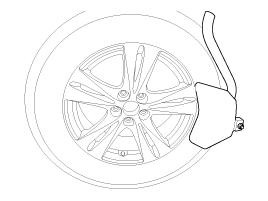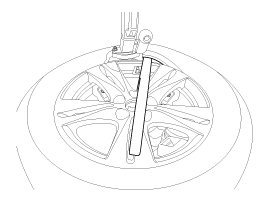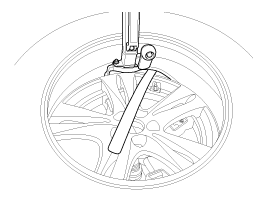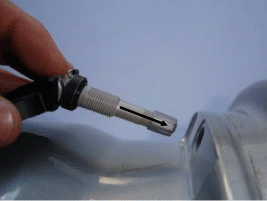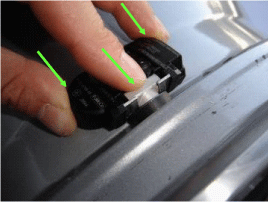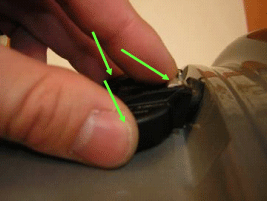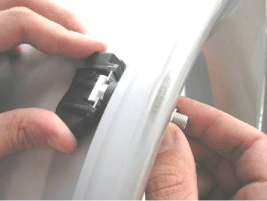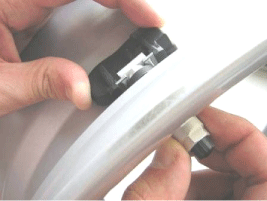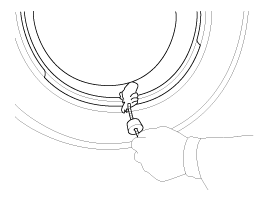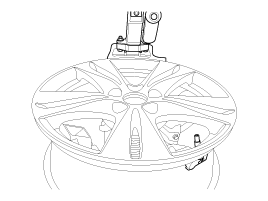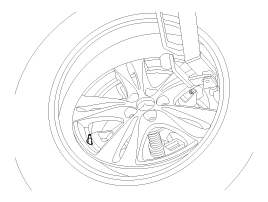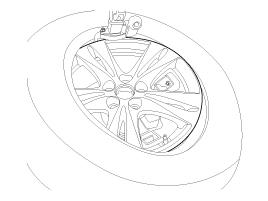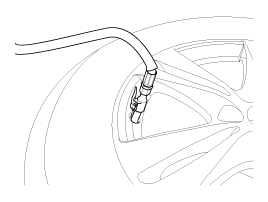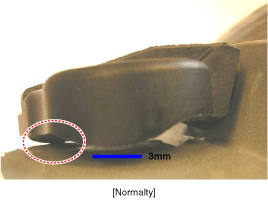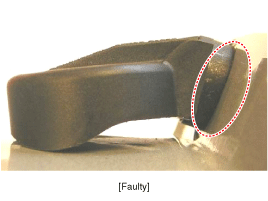 Hyundai Santa Fe: TPMS Sensor. Repair procedures
Hyundai Santa Fe: TPMS Sensor. Repair procedures
Replacement
| 1. |
Remove the valve core and deflate the tire.
|
| 2. |
Remove the side of the tire bead area from the wheel using tire
changing machine .
|
| 3. |
Rotate the wheel clockwise.
|
| 4. |
The valve during transportation (air inlet portion of the silver)
deviated from its original location be sure to check whether the original
position of the valve (metal brackets) are assembled in indented state.
|
| 5. |
While tightening the nut on the valve as not to deviate from the
fixed position while rotating the valve to a fixed location (metal brackets
to fit inside) and push. The specified torque (8Nm) to tighten the nut
does not reuse.
|
| 6. |
Contact with the rim so that the valve washer seals the valve
hole put into.
|
| 7. |
Housing with two fingers holding the valve in the axial direction
with one finger and push the valve.
|
| 8. |
Housing, the state must be visible laser marking.
|
| 9. |
When the valve is fully inserted so that the contact between the
sensor and the rim while keeping hands on the wheel nut tightening will
start Wed.
|
| 10. |
While maintaining the position of the valve and the sensor is
mounted nut.
|
| 11. |
Apply tire soap or lubrication to the top and bottom tire beads.
|
| 12. |
To fit the bottom bead, position the sensor at the 5 o’clock position
relative to the head on the tire changing machine
|
| 13. |
Place the tire on the rim so the bottom bead touches the edge
of the rim after the sensor (@6 o’clock). Rotate the rim clockwise,
and push down on the tire at the 3 o’clock position to fit bottom bead.
|
| 14. |
After bottom bead is on tire, rotate the rim until the sensor
is at the 5 o’clock position relative to the head on the tire changing
machine. Push down on the tire at the 3 o’clock position and rotate
the rim clockwise to fit the top bead.
|
| 15. |
Inflate the tire until both beads seat.
|
| 16. |
In the case of TPMS sensor failure, TPMS sensor needs learning.
Faulty sensor is replaced new units, conduct learning of TPMS sensors.
|
Inspection
| After installing TPMS sensor test methods Thai |
| 1. |
Sealing washer on the outside rim of hole to be compressed.
|
| 2. |
The lower part of the valve housing, a fixed place (no metal brackets)
should be located
|
| 3. |
Housing is at least one or more points on the surface of the rim
should contact.
|
| 4. |
The rim of the housing mounting height shall not exceed the height
of the chin.
|
Diagnosis procedure by using diagnostic device
| 1. |
Connect self-diagnosis connector(16pins) located in the lower
of driver side crash pad to self-diagnosis device, and then turn the
self-diagnosis device after key is ON.
|
| 2. |
Select the "vehicle model" and "TPMS" on GDS vehicle selection
screen, then select OK.
|
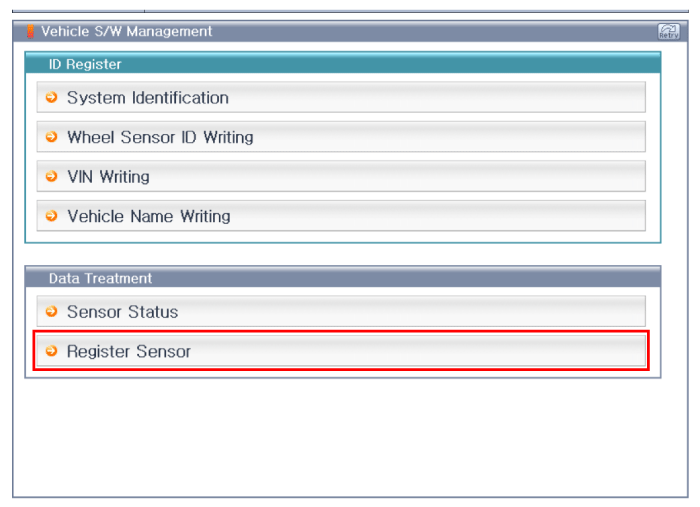
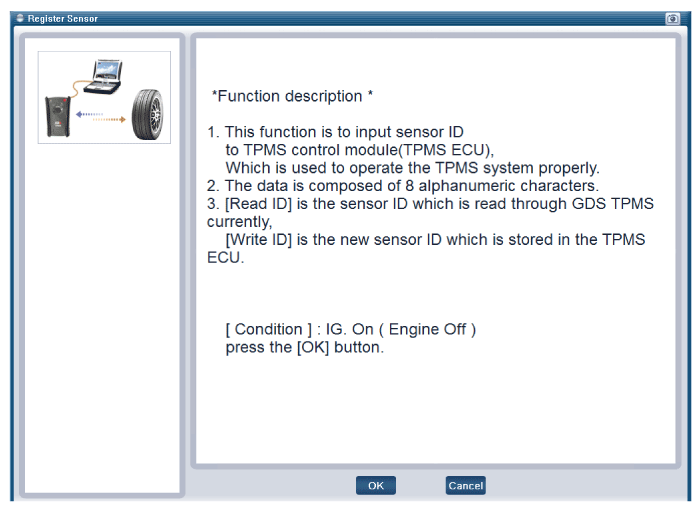
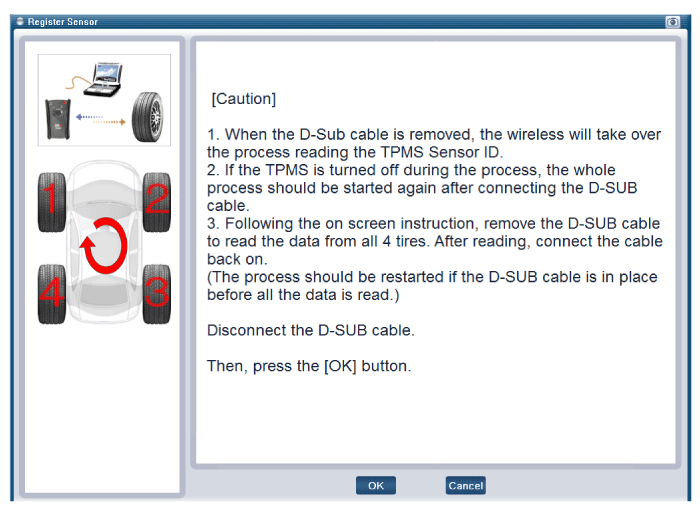
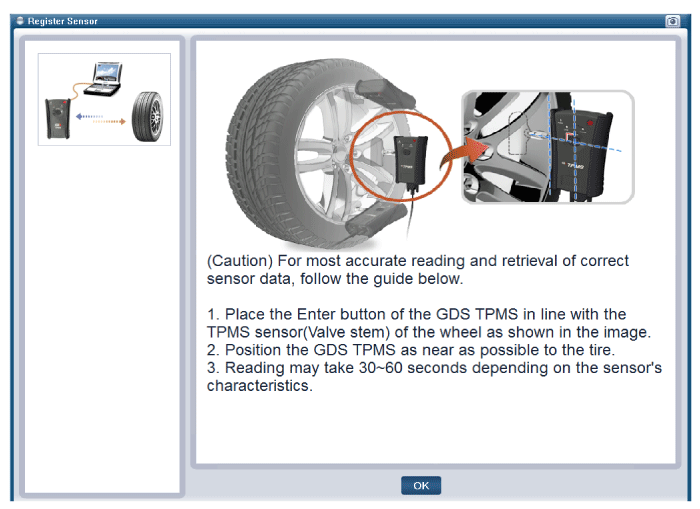
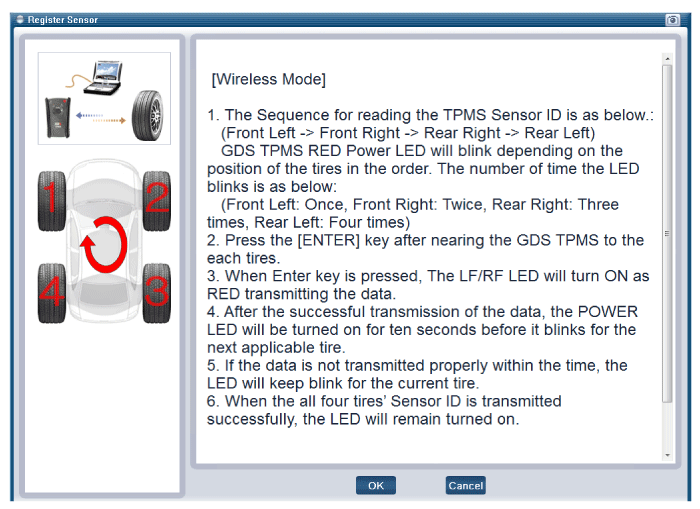
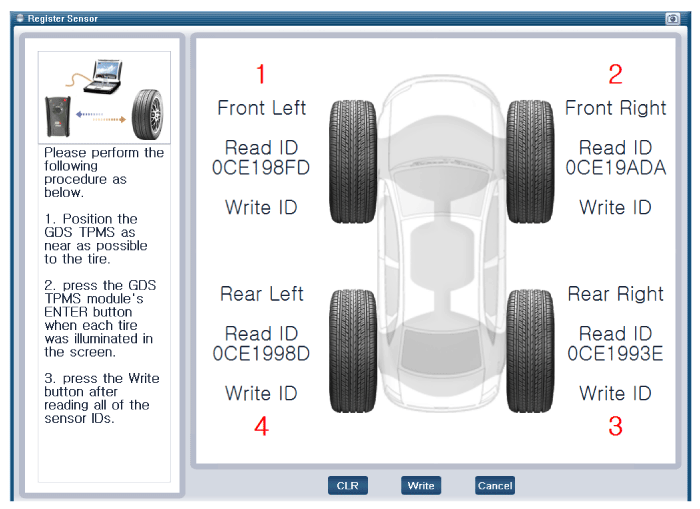
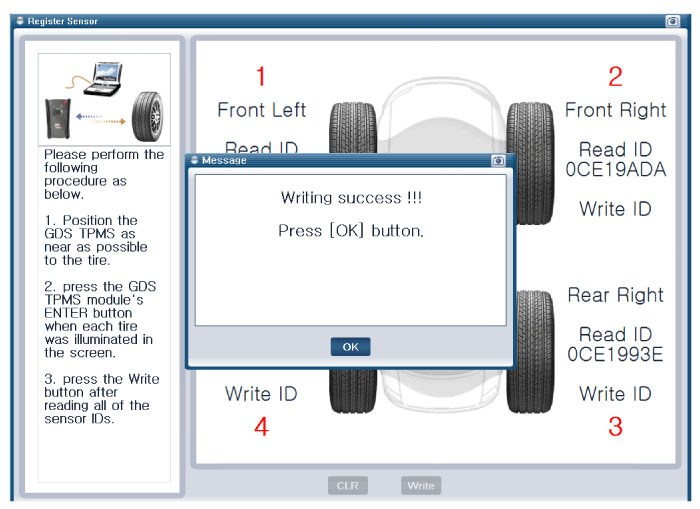
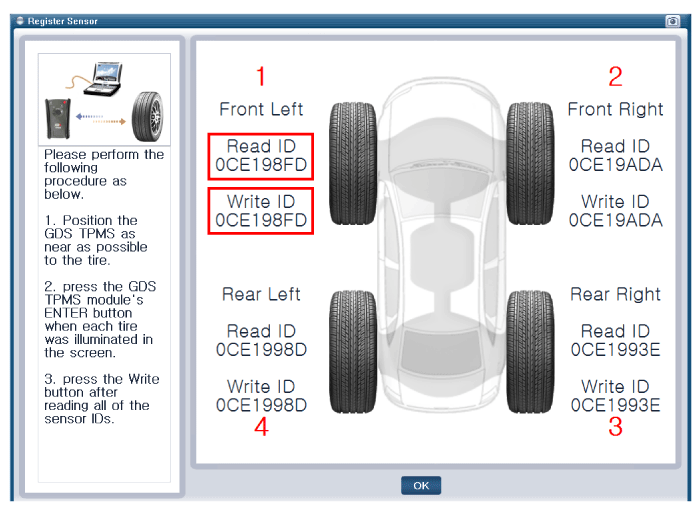
|
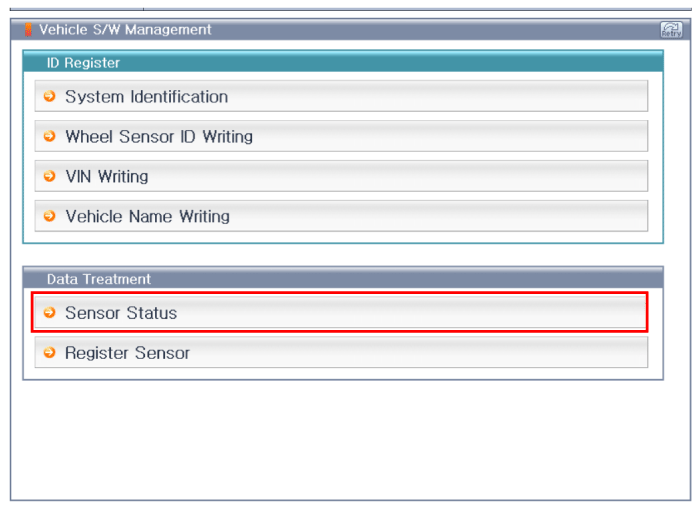
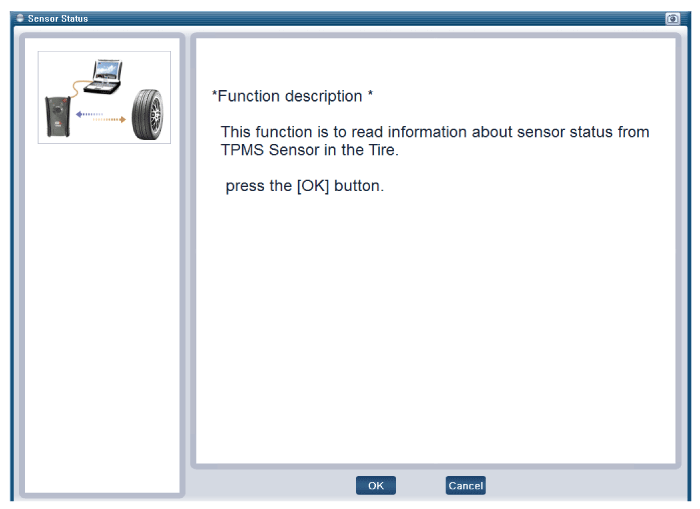
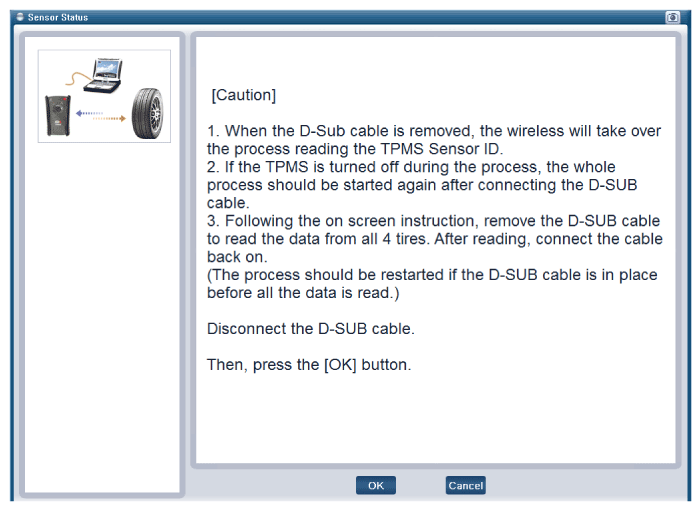
|
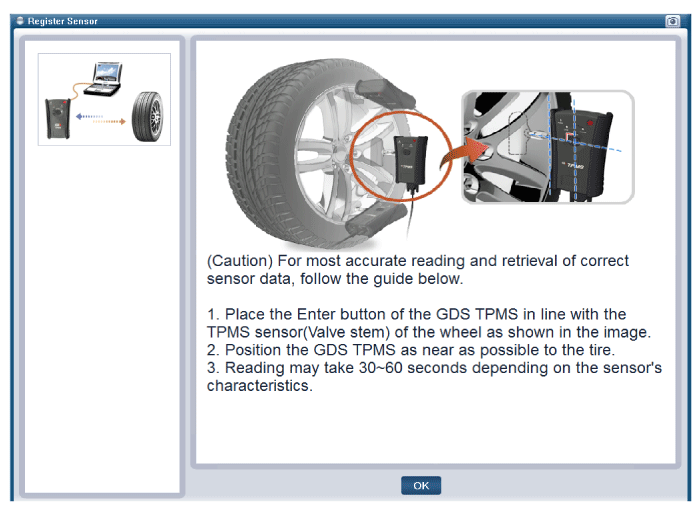
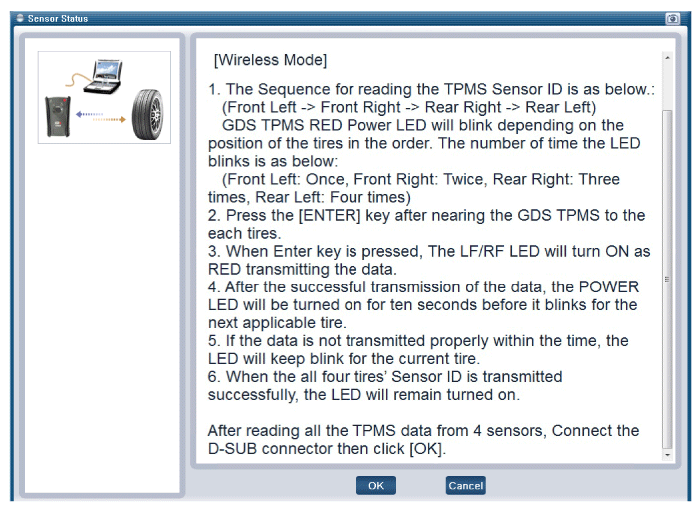
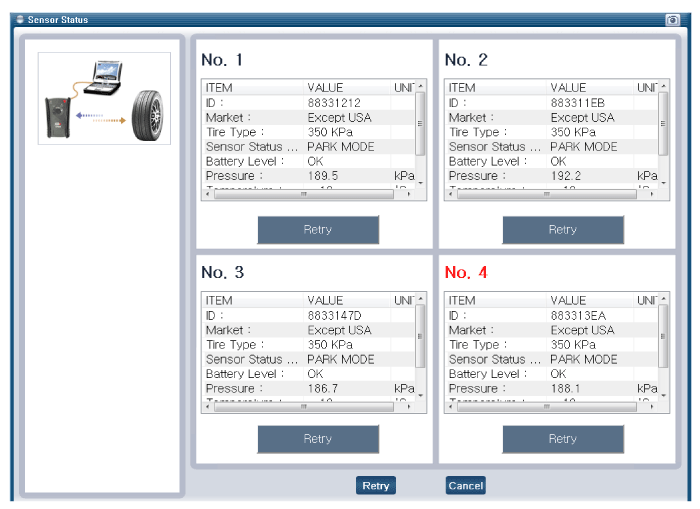
|
 TPMS Sensor. Description and Operation
TPMS Sensor. Description and Operation
Description 1. Function A. By detecting the pressure, temperature, acceleration, and battery condition, transmit information to ECU by a wireless RF. B. Wheel location is recognized by comparing with Wheel ...
 TPMS Receiver. Description and Operation
TPMS Receiver. Description and Operation
Description It search automatically sensor location and learn the new sensor. To check defect of system or vehicle, use the sensor information, distance, indistinct noise, automatic learning status, vehicle ...
See also:
Rear Seat Belt Retractor. Components and Components Location
Component Location 1. Second row seat belt retractor 2. Third row seat belt retractor ...
Parking brake
Applying the parking brake Foot type To engage the parking brake, first apply the foot brake and then depress the parking brake pedal down as far as possible. CAUTION Driving with the parking brake applied ...
Rear Oil Seal. Repair procedures
Removal 1. Remove the automatic transaxle. 2. Remove the drive plate. 3. Rmove the rear oil sela(A). Installation 1. Install rear oil seal. (1) Apply engine oil to a new oil seal lip. (2) Using SST(09231-H1100, ...

